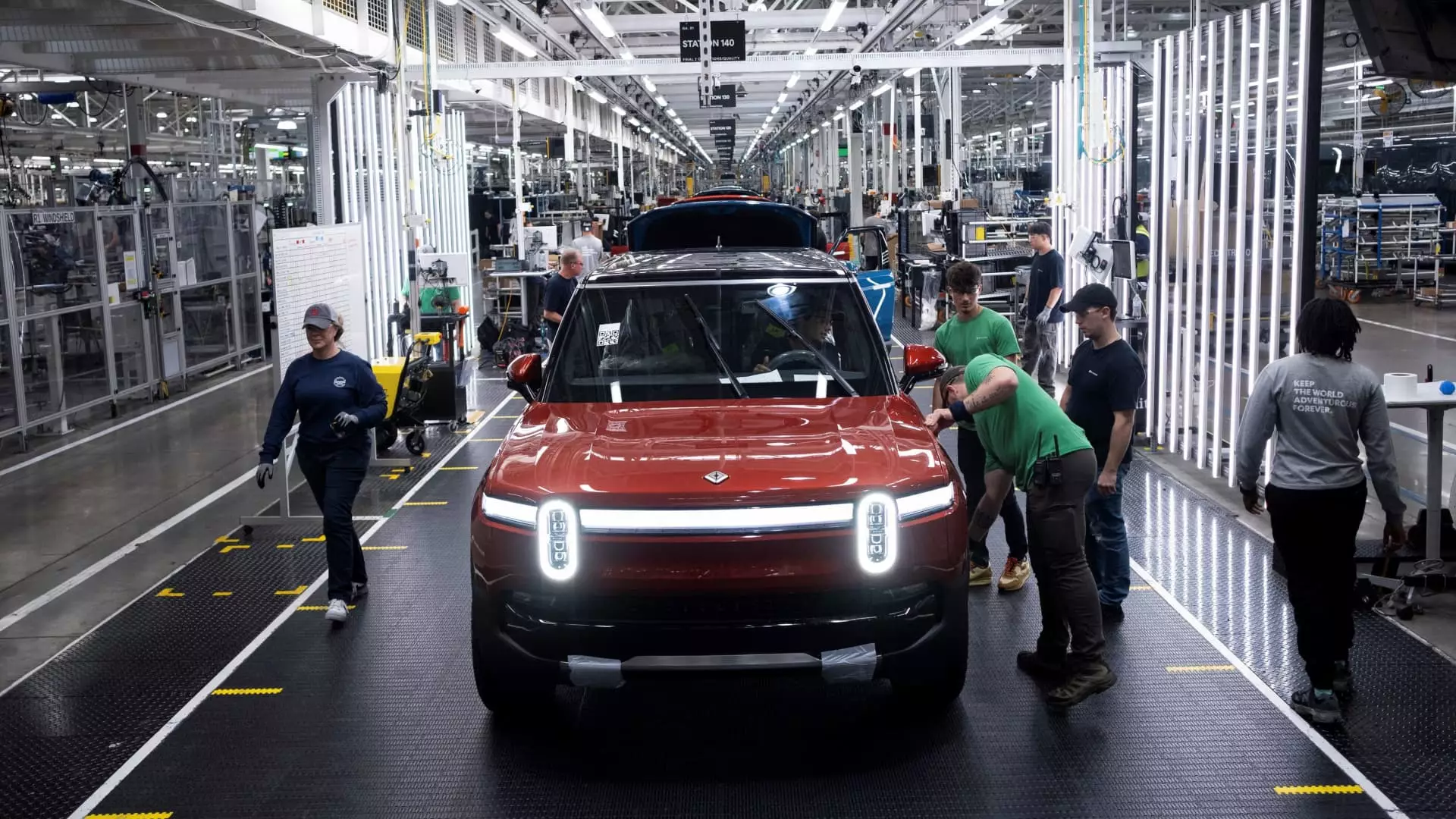Analyzing Rivian Automotive’s Financial Struggles and Future Prospects

In the ever-evolving landscape of electric vehicles (EVs), Rivian Automotive stands at a critical juncture as it navigates financial challenges and operational uncertainties. The company faced a setback when it lowered its earnings forecast for the year, stemming from underwhelming third-quarter results that fell short of Wall Street expectations. This analysis delves into the company’s performance, its strategic shifts, and what the future may hold for Rivian and its stakeholders.
Rivian’s third-quarter report revealed a stark contrast between anticipated performance and actual results. The company reported an adjusted loss per share of 99 cents, exceeding the expected loss of 92 cents. More alarmingly, its revenue of $874 million significantly trailed behind the anticipated $990 million. This considerable gap prompted revisions of the company’s financial outlook. Rivian projected adjusted earnings before interest, taxes, depreciation, and amortization (EBITDA) losses between $2.83 billion and $2.88 billion, a deterioration from the previously estimated loss of around $2.7 billion. These figures illuminate the challenges Rivian faces in translating ambitious production goals into financial viability.
Despite these unfavorable financial indicators, Rivian conveyed a commitment to achieving a “modest positive gross profit” in the fourth quarter, signaling its dedicated focus on profitability. The company reported a negative gross profit of $392 million for Q3, a slight improvement compared to the $477 million loss experienced in the same quarter the previous year. Analyst Tom Narayan from RBC Capital Markets expressed optimism that Rivian’s maintained gross profit target could bolster its stock price, considering that many analysts feared the company might retract its expectations. Such mixed sentiments reflect the volatility inherent in the EV market, characterized by fluctuating investor confidence and the quest for sustainable profitability.
Rivian’s challenges are further compounded by ongoing supplier disruptions, a contributing factor to the company’s lowered annual production forecast. Initially predicting production of 57,000 units, Rivian now anticipates producing only between 47,000 and 49,000 units—a substantial reduction that underscores the complexities of scaling production amidst external constraints. The impact of these supply chain issues was evident in a year-over-year revenue drop of 34.6%, which included $8 million from regulatory credits. CEO RJ Scaringe cited these disruptions as a “short-term issue,” emphasizing the company’s strategy to mitigate ongoing supply chain vulnerabilities.
Strategic Alliances and Future Vehicle Launches
As Rivian addresses its immediate challenges, it simultaneously seeks to bolster its future prospects through strategic partnerships. A notable development was the announcement of a collaboration with LG Energy Solution, aimed at securing U.S. manufactured battery cells for the upcoming R2 vehicles slated for release in 2026. This partnership is critical, as the company prepares to introduce its next-generation vehicles amid a landscape increasingly dominated by competition. By aligning itself with established players in the battery manufacturing space, Rivian not only strengthens its supply chain but also enhances its long-term viability.
Rivian Automotive’s recent financial performance is a reflection of both internal challenges and external market pressures. While the company has reaffirmed its commitment to achieving a positive gross profit, the realization of such goals hinges on successfully navigating supply chain complexities and restoring investor confidence. As Rivian moves forward, its ability to cultivate strategic partnerships and stabilize production will be crucial in determining whether it can sustain investor optimism and translate its innovative visions into tangible success. The coming months will be pivotal as investors and stakeholders alike observe how Rivian maneuvers through this turbulent phase and charts its path in the competitive EV market.





